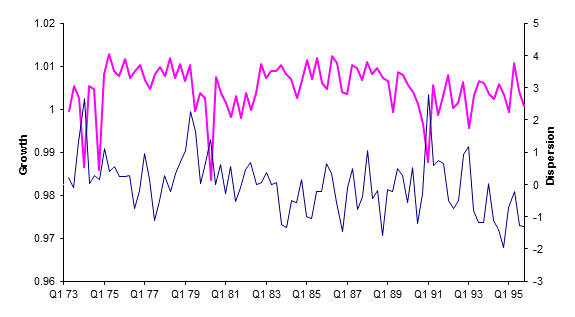research
My research has evolved around the following subject areas.
Empirical Asset Pricing
These studies look at the pricing of assets in a global setting using different risk-return models. My PhD thesis and the RFS-2003 paper tested the consumption based asset pricing model with incomplete markets and consumption heterogeneity. The second set of projects examined industry risk in the pricing of equity returns across countries. My JIFMIM-2000 paper with Pavel Fedorov from Morgan Stanley focused on the newly emerged Russian market. We find that different Russian industires are integrated with the world market to a different degree. In the subsequent MS-2004 paper with Francesca Carrieri and Vihang Errunza, we found some evidence for global industry specific risk across several industries. These findings prompted us to further examine the diversification benefits resulting from cross-country versus cross-industry investing. Then, in the JFQA-2014 paper with Ruslan Goyenko, we analyze the link between global equity returns and the liquidity of US Treasury bills. Finally, in the JFQA-2020 paper with Feng Jiao, we find that liquidity sensitivity and liquidity risk of US firms cross-listed in foreign markets are significantly lower than those liquidity characteristics of comparable firms traded only on US domestic exchanges.
Observe that the cross-country variance of consumption growth (blue series) increases when the world aggregate consumption (pink series) drops. 
Foreign Listings
The series of papers on this subject with Michael Schill dates back to our PhD studies at the University of Washington. First, in the RFS-2004 paper, we find that firms, similar to investors, have preference for listings in familiar markets. Second, contrary to the conventional wisdom, we show in the RFS-2009 and JBF-2012 papers that firms with foreign listing placements do not experience permanent cost of capital gains, even if they are placed in the United States. Third, in the JFQA-2016 paper, we observe that the history of foreign listings shows big waves over time in their origin and destination countries. Using a gravity model, we find that cross-listing waves in a given host country coincide with both its own economic and financial outperformance and that of proximate home markets. Fourth, in the RFS-2018 paper, together with David Chambers from Cambridge University, we use cross-bond listings of U.S. railroads in London in the 1874-1913 period and examine financial integration between the United States and its regions on one side and the United Kingdom on the other. Fifth, in the RFS-2020 paper co-authored also with Patrick Augustin and Feng Jiao, we find that cross-listing improves the alignment between equity and CDS returns of the same firm.
Unlike all the above studies that use global foreign listing data, my RCFS-2020 paper with Yan Wang focuses only on cross-listings of foreign firms in the United States and shows that these listings put negative competitive pressures to their US firm rivals. This result cannot be explained by market or industry valuation timing or existing product market competition.
Below is the annualized 12-month moving average cumulative risk-adjusted return of cross-listed firms around the listing event (month 0). Note that the average return of these firms in Period 4 is similar to that in Period 1. 
Fund Performance
Two papers on mutual funds with Susan Christoffersen look primarily at the impact of external factors (such as location) on fund performance and turnover in a cross-section and over time. The first paper, JFE-2009, shows that funds in US financial centers on average perform better than in smaller towns. Yet, this outperformance comes only thanks to those managers who stay in financial centers at least several years. In the follow-up JFI-2011 paper, we observe that fund trading is also quite different across locations and manager characteristics, but these differences do not explain the performance patterns found in earlier studies.
The JFQA-2017 paper with Saurin Patel focuses on the impact of fund organizational structure on fund performance. We find that team-managed funds on a risk-adjusted basis perform better than single-managed funds across a variety of metrics. Moreover, in our RFS-2020 paper, we find that team-managed funds engage much less in such illegal trading activity as portfolio pumping. Finally, our joint work with Anastassia Fedyk shows that team-managed funds also decrease such behavioral bias among portfolio managers as overconfident trading.
Observe that average mutual fund returns increase with city population size. 
Statistical Issues and Market Anomalies
Together with Wayne Ferson, my dissertation advisor, and Tim Simin, we completed several projects that question the validity of statistical inferences in several well-known settings in financial economics. The first paper, JFM-2000, illustrates that sorting of stocks on some firm-specific attribute and two-stage regression methodology used to document the importance of size and book-to-market effects for the cross-section of returns can lead to these types of findings even if returns are unrelated to the attribute risk. Our JF-2003 and JFQA-2008 papers look at statistical inferences in cases of simple predictive regressions of stock returns and conditional asset pricing models, respectively. We find that the predictive power for stock returns of many standard predictors such as dividend yield, short-term interest rates, etc., is grossly overstated due to the highly autocorrelated nature of these instruments. This problem is smaller when testing conditional asset pricing models with time-varying intercepts and betas.
Here are the results of the regression of monthly S&P 500 index returns on various known predictors, one at a time. Note that the majority of these predictors are highly autocorrelated. 
|
|
|